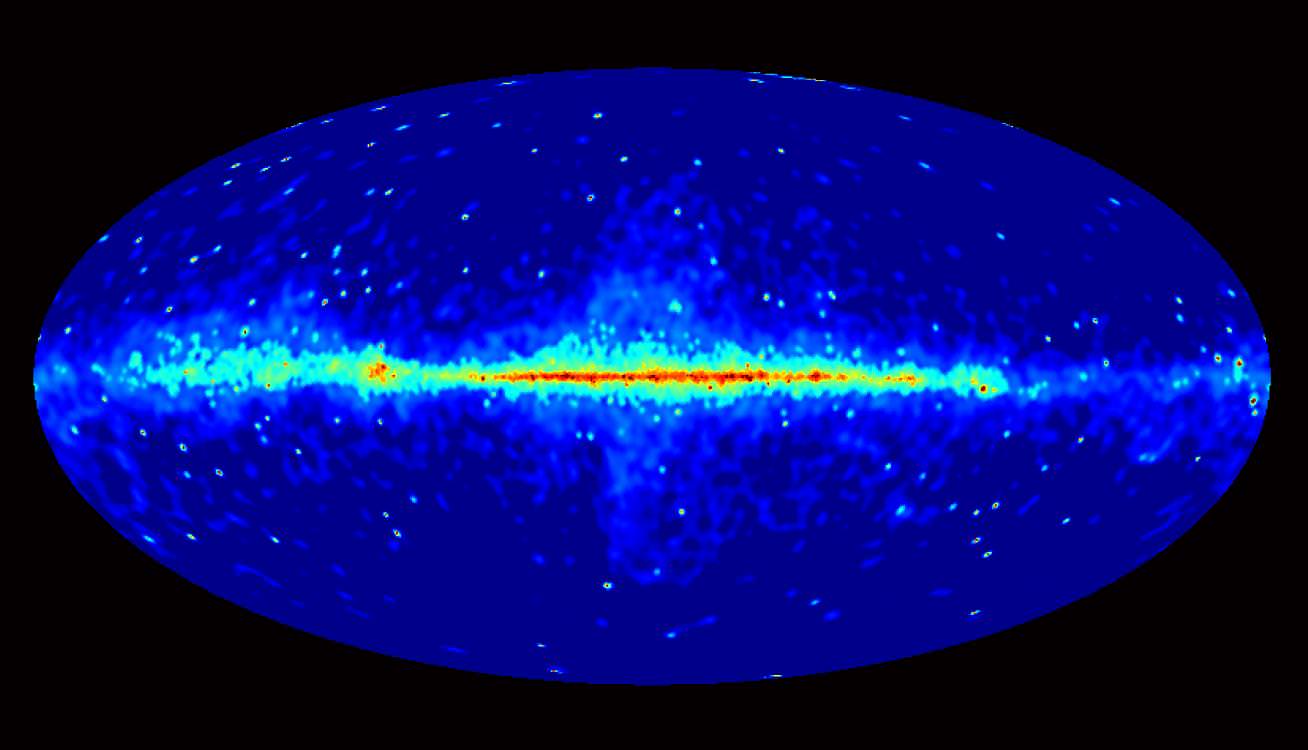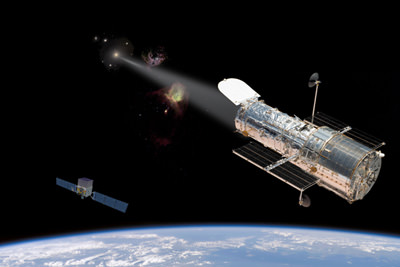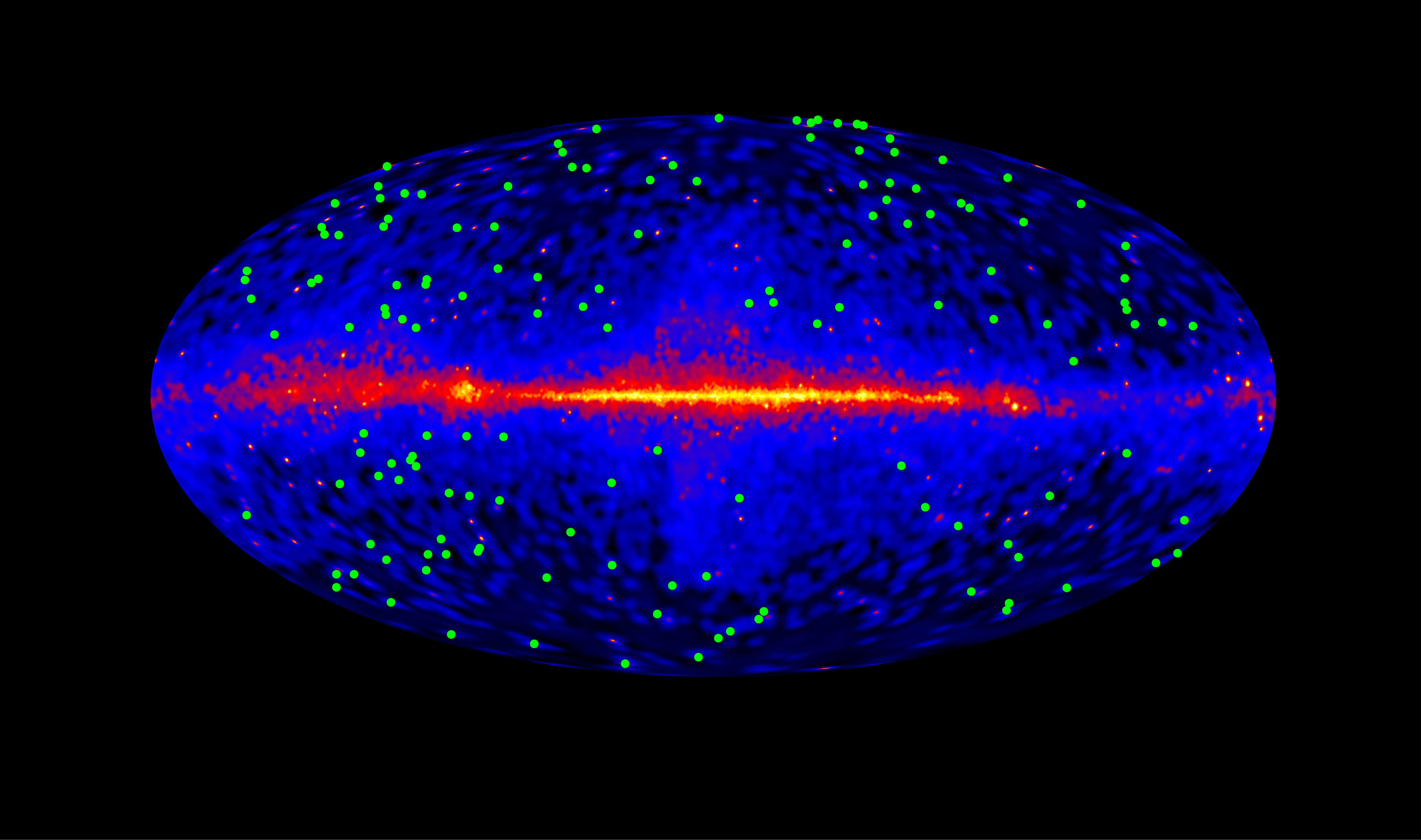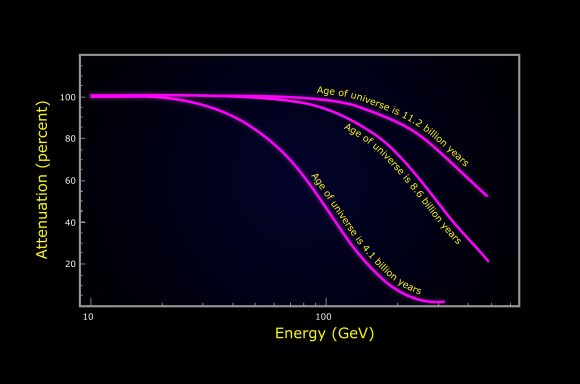The universe, most cosmologists tell us, began with a bang. At some point, the lights turned on. How much light has the universe produced since it was born, 13.8 billion years ago?
It seems a difficult answer at first glance. Turn on a light bulb, turn it off and the photons appear to vanish. In space, however, we can track them down. Every light particle ever radiated by galaxies and stars is still travelling, which is why we can peer so far back in time with our telescopes.
A new paper in the Astrophysical Journal explores the nature of this extragalactic background light, or EBL. Measuring the EBL, the team states, “is as fundamental to cosmology as measuring the heat radiation left over from the Big Bang (the cosmic microwave background) at radio wavelengths.”
Turns out that several NASA spacecraft have helped us understand the answer. They peered at the universe in every wavelength of light, ranging from long radio waves to short, energy-filled gamma rays. While their work doesn’t go back to the origin of the universe, it does give good measurements for the last five billion years or so. (About the age of the solar system, coincidentally.)
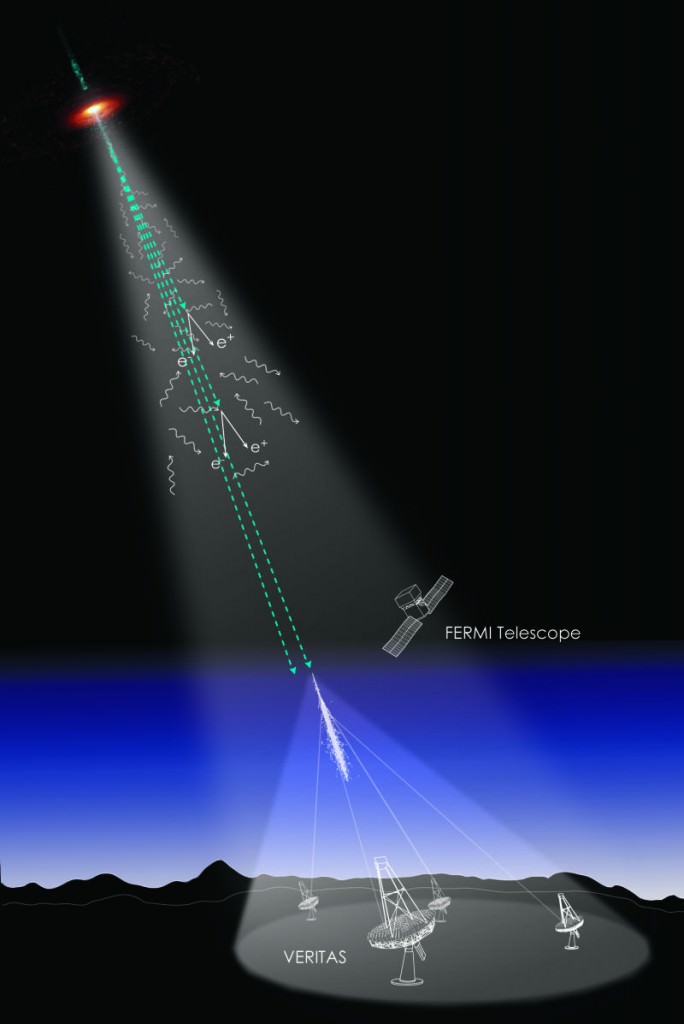
It’s hard to see this faint background light against the powerful glow of stars and galaxies today, about as hard as it is to see the Milky Way from downtown Manhattan, the astronomers said.
The solution involves gamma rays and blazars, which are huge black holes in the heart of a galaxy that produce jets of material that point towards Earth. Just like a flashlight.
These blazars emit gamma rays, but not all of them reach Earth. Some, astronomers said, “strike a hapless EBL photon along the way.”
When this happens, the gamma ray and photon each zap out and produce a negatively charged electron and a positively charged positron.
More interestingly, blazars produce gamma rays at slightly different energies, which are in turn stopped by EBL photons at different energies themselves.
So, by figuring out how many gamma rays with different energies are stopped by the photons, we can see how many EBL photons are between us and the distant blazars.
Scientists have now just announced they could see how the EBL changed over time. Peering further back in the universe, as we said earlier, serves as a sort of time machine. So, the further back we see the gamma rays zap out, the better we can map out the EBL’s changes in earlier eras.

To get technical, this is how the astronomers did it:
– Compared the gamma-ray findings of the Fermi Gamma-ray Space Telescope to the intensity of X-rays measured by several X-ray observatories, including the Chandra X-Ray Observatory, the Swift Gamma-Ray Burst Mission, the Rossi X-ray Timing Explorer, and XMM/Newton. This let astronomers figure out what the blazars’ brightnesses were at different energies.
– Comparing those measurements to those taken by special telscopes on the ground that can look at the actual “gamma-ray flux” Earth receives from those blazars. (Gamma rays are annihilated in our atmosphere and produce a shower of subatomic particles, sort of like a “sonic boom”, called Cherenkov radiation.)
The measurements we have in this paper are about as far back as we can see right now, the astronomers added.
“Five billion years ago is the maximum distance we are able to probe with our current technology,” stated the paper’s lead author, Alberto Dominguez.
“Sure, there are blazars farther away, but we are not able to detect them because the high-energy gamma rays they are emitting are too attenuated by EBL when they get to us—so weakened that our instruments are not sensitive enough to detect them.”
Source: University of California High-Performance AstroComputing Center

